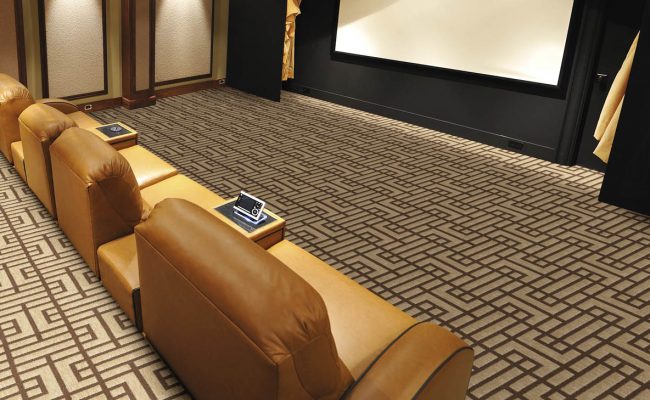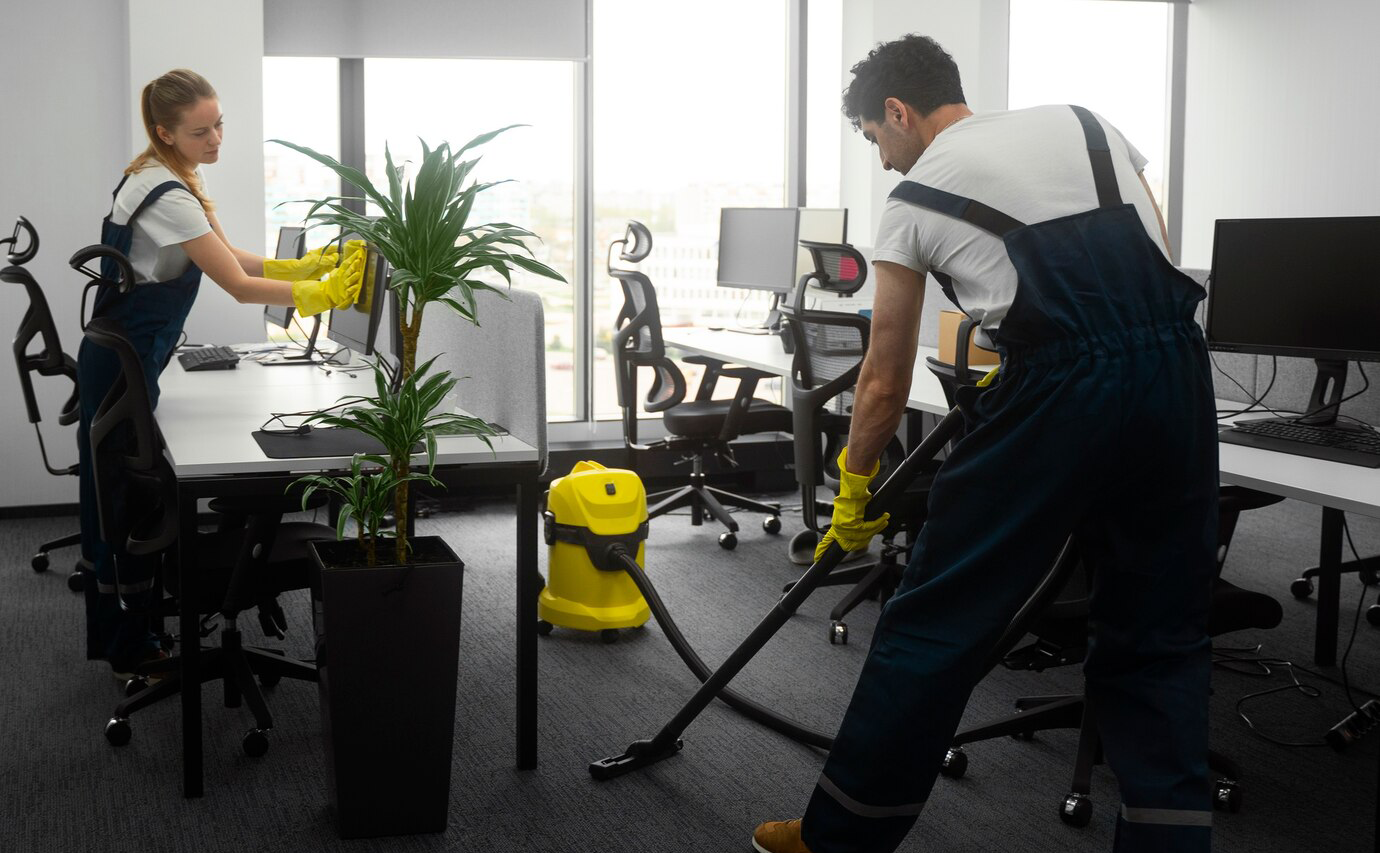
The Ultimate Home Theater Carpet Selection Guide
A guide on selecting carpet for home theaters, highlighting how premium brands like Joy Carpet and Stanton Carpet can enhance both the aesthetic appeal and acoustic quality of the space

Keeping your Hotel Carpet in Top Shape by Following this Guide
Your hospitality carpet installation is a significant investment, both in monetary terms and overall facility image. A consistent and effective carpet maintenance program can maintain the initial facility image and dramatically extend the life of your monetary investment. The appearance of your carpet depends upon several factors – color, pattern, density, fiber and a viable maintenance program. Great care should be taken when choosing carpet colors, patterns and textures. These features combined with fiber quality and construction standards engineered to meet performance requirements are important factors.
Carpet Performance
Starting with the right carpet choices will lead to the best end-use carpet performance.
Carpet performance is directly related to specification, installation and proper maintenance. When the right style of carpet is chosen and it is professionally installed, a professionally designed maintenance program will increase the life expectancy and performance of that carpet. Carpet performance is most effectively enhanced and maintained when the following exist:
The five elements for Maintenance Planning and Scheduling
A comprehensive carpet care program should consist of these five elements:
Carpet maintenance must be established as a scheduled program not as a random series of reactions to soiling conditions and infrequent cleanings. A thoughtfully designed and implemented maintenance program performed by properly equipped and trained personnel is essential for optimal long term performance. You must tailor the design of the program to the amount of traffic and type of soiling, which may vary by area. Due to the higher traffic levels, entrance lobbies, elevators and hallways will need more care than office areas. Food areas and entrances will require more effort due to the more difficult soiling conditions. Consult the chart below for suggested maintenance by traffic levels.
| Traffic Level | Vacuum | Pile Lift | Spot Clean | High Performance Hot Water Extraction |
| Light | 2-3 times a week | ————– | As needed | Annually |
| Medium | Daily | Quarterly | As needed | Twice a year |
| Heavy | 1+ times a day | Monthly | As needed | Quarterly |
| Severe | 1+ times a day | Minimum Monthly | As needed | Minimum Monthly / Weekly |
One of the most critical aspects of maintenance is the use of walk-off mats at building entrances. The easiest way to maintain your carpets appearance is to prevent dirt and stains from reaching the carpet. This may seem impossible but walk-off mats greatly reduce the amount of soil carried into a building by foot traffic. The choice of mats is important, most less expensive mats do a poor job of trapping soil and have a short life span.
There are two categories of walk-off mats: those designed to remove and trap soil and those intended to absorb water during wet weather. When both types of mats are used in combination, they should always be placed so that incoming traffic passes over the mat first to provide effective soil reduction. Good soil removal mats have a coarse texture, and are able to capture and hold soil from shoes in their pile. The water absorbent mat is used inside to prevent moisture from being tracked and getting into the carpet. Wet carpets act as show cleaners and absorb soil quickly.
For mats to continue to trap soil, they must be cleaned on a regular basis, more frequently than carpets. If accumulated soil is not removed, the mat will become overloaded and will not prevent soil from entering the building and then this can become a source of soil itself.
Carpet Care and Cleaning Instructions
Vacuuming
The most important and cost effective element of an efficient maintenance program is vacuuming. Past studies have shown that 85% of the soil tracked into a building is dry and the other 15% is oily. Vacuums are designed to remove dry soil. The more traffic that your carpet receives allows soil particles to work their way down into the carpet pile, where they are more difficult to remove. Frequent vacuuming, removes these soil particles from the surface before this happens. Heavily trafficked areas, such as entrances and major corridors, must be vacuumed at least once a day. Areas with less traffic must be vacuumed every other day depending on surrounding conditions.
Vacuuming Equipment Recommendations
Vacuums specifically designed for commercial installations have characteristics that aid with the demands of a proper maintenance program. You should choose a vacuum that has been certified by the Carpet and Rug Institute (CRI). CRI has certified a wide variety of vacuums which will allow the consumer to choose the one that best meets their daily demands, for further information about CRI certifications visit www.carpet-rug.org .
The following two types of vacuum cleaning equipment are available for daily maintenance of commercial installations.
For vinyl-back carpet tile and carpets that are glued directly to floor without cushioning, a vacuum with a rotation cylindrical brush, rather than a beater bar, should be used to agitate the pile and loosen the soil. Beater bars can damage the pile of direct glued carpet, if the machine height adjustment is set too low as well as damage the vacuum itself. Vacuums with either a beater bar or rotating brush can be used for carpet installed over pad, or with attached cushion backings. These vacuums are also recommended for double stick installations, where the carpet is glued to the pad.
A good vacuum is vital to prolonging the life of your facilities’ carpet. A cheap vacuum can appear to remove the surface dirt but may not remove the hidden particles embedded in the carpet pile.
Spot and Stain Removal
All maintenance procedures discussed thus far have been geared toward preventative maintenance. We must now discuss a plan for spot and stain removals, which is a reaction to unexpected incidents and accidents. The following steps will aid you in properly dealing with spills and help keep your carpet clean for years to come:
Act Quickly! Today carpet manufacturers offer a stain resist treatment, at an additional cost, this is money wisely spent. Once carpet has been treated many spills can be removed if immediate action is taken. The longer the delay, the higher the probability that the stain will become permanent. Remember, staining is influenced by many factors, and no carpet is completely stain proof.
Be patient, complete removal of the spill may require repeating the same steps several times. After the spill has been completely removed rinse the affected area thoroughly with cold water and blot with a clean dry cloth until all of the solution has been removed. A wet/dry vacuum or portable extraction machine can be used to remove excess water or large liquid spills.
Methods of Cleaning
Even with the most thorough vacuuming, regular carpet cleaning is necessary to remove the remaining soil left behind in the carpet pile which has not been removed by vacuuming. Cleaning not only improves your carpets appearance but will also aid in extending the life of the carpet. The more traveled areas will need more attention than other areas. If the carpet is cleaned before it becomes excessively soiled it will be more successful. Carpets that are exceptionally soiled may require an extensive cleaning program to help restore the look of the carpet.
Hot Water Extraction is the method that most manufacturers recommend. Research indicates that Hot Water Extraction provides the best capability for cleaning by infusing hot water into the carpet pile to help loosen the soil. This process consists of spraying a solution of water and cleaning agent into the pile and using a powerful vacuum to recover the used solution and soil into the holding tank. It is important to use non-sticky detergents; sticky residues can lead to rapid re-soiling. Take caution not to over wet the carpet. Over wetting can cause the latex to break down and lead to a delaminating problem. Use fans to help speed the drying time and avoid walking on the carpet before it is completely dry.
The use of bonnet/spin cleaners is not recommended and its use will void all manufacturing warranties.
Foam cleaning , which includes wet and dry foam, can be effective by removing dirt from heavily soiled carpet. These methods, can however leave chemicals in the carpet, if used always follow with Hot Water Extraction to remove any residues left from the foam.
The installation of your facilities carpet will play an important role in the long term appearance of your carpet. The professional installer should always clean and re-seal the sub-floor before any new carpet is installed. Any dirt that is below the padding can work its way up into the carpet, if moisture from cleaning, humidity or stains is introduced to the carpets surface.
If you have any questions, please call Signature Hospitality Carpets technical department at 800-809-7086 .
Below are recommended procedures by stain type, you should always consult a professional cleaner.
General Instructions: APPLY: Solutions, solvents, water, and other liquids should be applied to a clean white paper towel (not printed) and this wet towel used to dampen the carpet. Never wet the carpet through to the backing. BLOT: Blot by pressing straight down with a clean white towel – never rub. Rubbing alters the carpet texture. In the final blotting step a 1/2″ thick pad of clean white paper towels, placed on the cleaned spot with a eight and left overnight, is the best way to wick up the last traces of liquid and foreign materials. SCRAPE: Gently scoop or scrape with blunt edge of spoon from the outside of the spill or spot toward the center.
Cleaning Solutions: DETERGENT: Mix 1 teaspoon clear dishwashing detergent with 1 cup warm – not hot – water. PRESOAK SOLUTION: Mix 1 teaspoon enzyme presoak (Axion, Biz, etc.) with 1 cup warm water. HYDROGEN PEROXIDE: Mix 4 fluid ounces Hydrogen Peroxide (3% strength available in drug stores) with 1 fluid ounce household ammonia (sudsy type). Use within 2 hours after mixing AMMONIA: Undiluted household ammonia, sudsy type containing detergent. VINEGAR: Undiluted white vinegar DRY POWDER CLEANER: Powdered carpet cleaners such as Host Capture and Blue Luster. DRY CLEANING SOLVENT: Non-oily, non-caustic type sold for spot removal from garments. Caution: my be flammable.
REMOVAL PROCEDURES
Procedure A APPLY a dry solvent, use dampened towel BLOT – don’t rub REPEAT solvent application as above BLOT – don’t rub WATER – apply with dampened towel BLOT – finish with weighted pad of towels.
Procedure B SCRAPE or BLOT up excess spill APPLY DETERGENT (See “Clean-ing Solutions”), use damp towel BLOT – don’t rub APPLY AMMONIA (See “Cleaning Solutions”), use damp towel APPLY WHITE VINEGAR (Undiluted), use damp towel BLOT – don’t rub WATER – apply with damp sponge BLOT – finish with weighted pad of towels.
Procedure C SCRAPE or BLOT up excess spill APPLY dry baking soda SCRAPE and VACUUM WATER – use damp sponge to rinse remaining baking soda. Don’t overwet BLOT – don’t rub APPLY PRESOAK SOLUTION (See “Cleaning Solutions”), use damp towel WATER – Rinse as above BLOT – don’t rub – dry well APPLY DRY POWDER CLEANER (See “Cleaning Solutions”) VACUUM.
Procedure G SCRAPE or BLOT up excess spill FREEZE with ice cubes SHATTER with blunt object like the back of a large spoon VACUUM chips away before they melt.
Procedure L APPLY NAIL POLISH REMOVER (non-oily type) – use cotton swab to apply to the spill. Don’t wet through to carpet backing. PICK UP SOFTENED MATERIAL – use clean white paper towel and push toward the center of the spill to avoid spreading stain REPEAT ABOVE – soften and care-fully remove a layer of the spill each time. Haste may spread the stain and/or damage the carpet.
Procedure M SCRAPE or BLOT up excess spill APPLY DETERGENT SOLUTION (See “Cleaning Solutions”), use damp towel, leave 3-5 minutes BLOT – don’t rub APPLY HYDROGEN PEROXIDE SOLUTION (See “Cleaning Solutions”) – let stand for 20 – 30 minutes under a weighted pad of clean, dry white paper towels REPEAT application of Hydrogen Peroxide and dry under weighted pad until removal is complete APPLY WHITE VINEGAR (Undiluted), use damp towel BLOT – finish with weighted pad of towels.
Procedure O SCRAPE off excess material COVER WITH BROWN PAPER APPLY WARM IRON until material is absorbed. Be sure paper is large enough and take care to never touch the iron to the carpet. CHANGE PAPER OR ROTATE to clean area and repeat until all material is absorbed.
Procedure P VACUUM away as much as possible LOOSEN remaining powder by tapping with a scrub brush or tooth brush Tap with brush, do not scrub. VACUUM APPLY DRY POWDER CLEANER (See “Cleaning Solutions”) TAP WITH BRUSH to work powder into carpet tufts. Do not scrub. LET POWDER DRY – 1 hour or more VACUUM REPEAT dry powder application, as above, if necessary.
Where two procedures are listed (example B-M), use first procedure (B), then second (M) only if needed.
| STAIN |
PROCEDURE
|
STAIN |
PROCEDURE
|
| ASPHALT |
A
|
LEMONADE |
C-M
|
| BEER |
B
|
LINSEED OIL |
A
|
| BERRIES |
B-M
|
LIPSTICK |
A
|
| BLOOD |
B
|
MAKEUP |
A-B
|
| BUTTER |
A
|
MACHINE OIL |
A
|
| CANDLE WAX |
O
|
MASCARA |
A
|
| CANDY (SUGAR) |
B
|
MAYONNAISE |
B
|
| CARBON BLACK |
A
|
MERCUROCHROME |
M
|
| CATSUP |
C-M
|
METHIOLATE |
M
|
| CHEWING GUM |
G
|
MILK |
B
|
| CHOCOLATE |
B
|
MIMEO CORRECTION FLUID |
L
|
| CHALK |
P
|
MIXED DRINKS (LIQUERS) |
B-M
|
| COFFEE |
B-M
|
MUD |
B
|
| COOKING OIL |
A-C
|
MUSTARD |
C-M
|
| CRAYON |
A
|
NAIL POLISH |
L
|
| DIRT |
P
|
PAINT – LATEX |
B
|
| DYES- BLUE, BLACK, GREEN, RED |
M
|
PAINT – OIL |
A
|
| EXCREMENT |
C
|
PAPER MACHE |
B
|
| FRUIT JUICE |
C-M
|
RUST |
RUST REMOVER
|
| FURNITURE POLISH |
A
|
SHELLAC |
DENATURED ALCOHOL – A
|
| FURNITURE POLISH – WITH STAIN |
C-M
|
SHOE POLISH |
A-M
|
| GRAPHITE |
A-M
|
SNOW MELTING CHEMICALS |
B
|
| GRAVY |
A
|
SOFT DRINKS |
C-M
|
| GLUE – WHITE |
B
|
TAR |
A
|
| GLUE – HOBBY |
A-L
|
TEA |
B-M
|
| HAIR SPRAY |
A
|
TOOTH PASTSE |
B
|
| HAND LOTION |
A
|
URINE – DRY |
B
|
| ICE CREAM |
B
|
URINE – FRESH |
B
|
| INK – BALL POINT PEN |
A
|
VARNISH |
A
|
| INK – FOUNTAIN PEN |
A-M
|
VASELINE |
A
|
| INK – INDIA, MARKING PEN |
A-M
|
WATER COLOR |
B
|
| INK – MIMEO |
A-M
|
WINE -RED |
B
|
| ARTIFICIALLY COLORED FRUIT DRINKS |
C-M
|
WINE – WHITE |
B
|
| LACQUER |
L
|
UNKNOWN |
A-B
|
| LATEX CALK / ADHESIVE |
B
|

A guide on selecting carpet for home theaters, highlighting how premium brands like Joy Carpet and Stanton Carpet can enhance both the aesthetic appeal and acoustic quality of the space

A comprehensive guide on selecting the perfect church carpet, emphasizing the importance of color, material, and pattern choices in enhancing the worship experience

Explore the transformative power of custom-designed hospitality carpet in enhancing the ambiance and guest experience of luxury hotel spaces

Carpets in Dalton is our sister site that is focused on luxury residential carpet and custom size rugs.
Broadloom Specials
Price: $10.99 /Sq Yard
Broadloom Specials
Price: $11.99 /Sq Yard
Broadloom
Broadloom
Broadloom
Broadloom
Dalton Hospitality Carpet Mills is a leading online dealer of carpet & hard surface flooring for the hospitality industry including hotels, motels, churches and other commercial properties. Our goal is to provide the best service and flooring products at discount and wholesale prices.